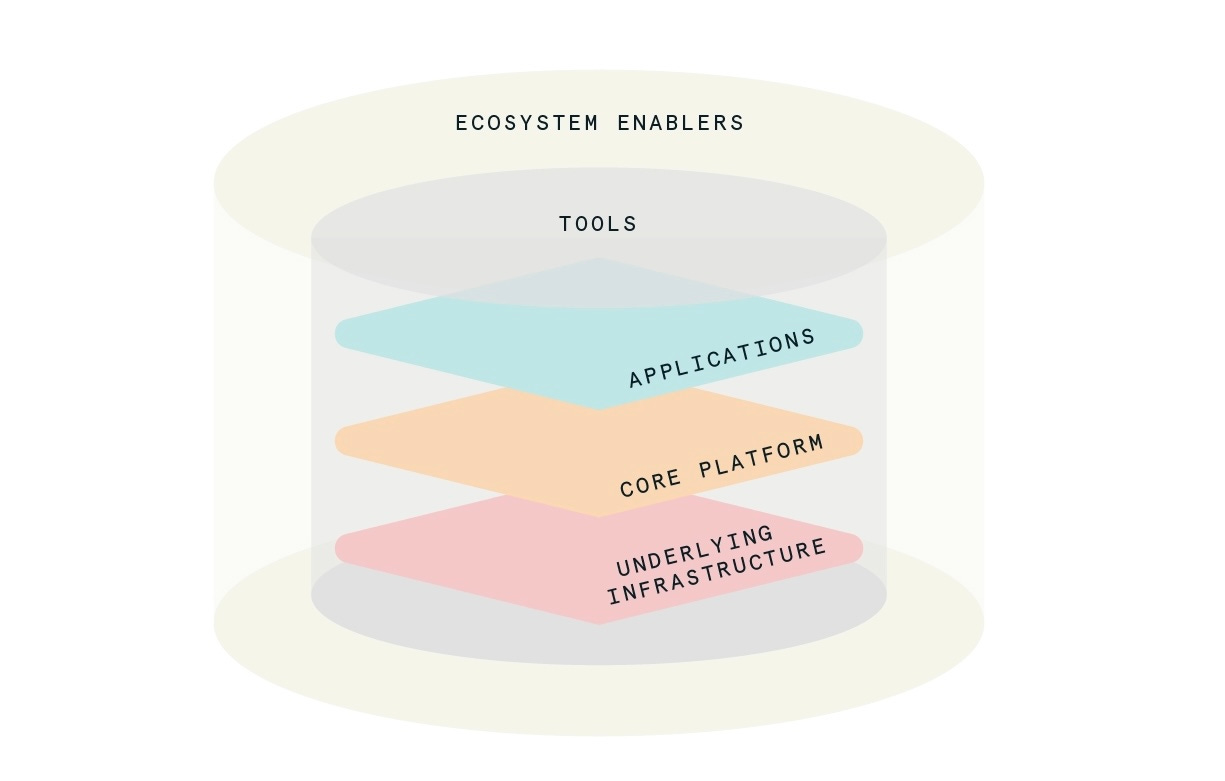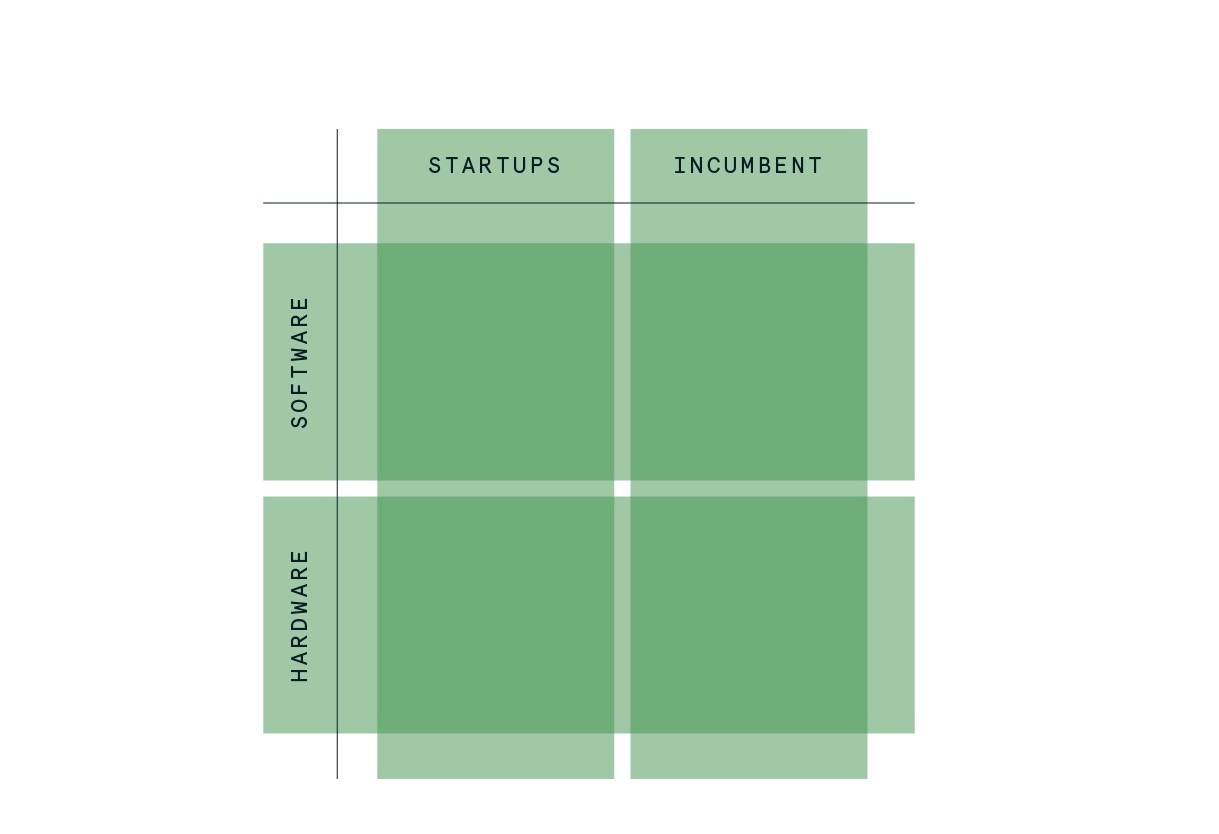Part One: One-Year Anniversary of ChatGPT. Has AI Become the New Tech Platform?
How to Assess the Disruptive Potential of a New Technology Wave
This is Part One of a three-part series on the Anatomy of an Innovation Wave. In this Part One, I will introduce the Anatomy Framework as a concept to measure innovation waves. In Part Two, I will discuss the most common characteristics of disruptive technology waves. In Part Three, I apply the Anatomy Framework and the common characteristics to our current generative AI wave. Many thanks to Omar Nasser for research and Cass Tan for visuals—I could not have communicated this without your support.
Anatomy of an Innovation Wave
We have just crossed the one-year anniversary of OpenAI’s release of ChatGPT and Google just announced its long awaited Gemini model. This means that there has been at least a full year of people declaring that AI is the new platform without actually defining what that means. The bold claims prompted me to ask the following question: what constitutes a platform shift?
Even beyond the specifics of the current generative AI wave, I wondered whether we have a way to measure the disruptive potential of any particular innovation. We have structured ways to measure a physical wave or the force of a hurricane, but how do we distinguish between the different degrees of technology waves?
By analysing historical innovation waves, we developed a tool—the Anatomy Framework—to assess the disruptive nature of new technologies. The Anatomy Framework provides a set of characteristics that are typical of more disruptive technology shifts. We then apply the Anatomy Framework to the current generative AI wave to determine the disruptive potential compared to previous technology waves. By having a strong grasp of the past and how learnings apply to the present, we should be better informed to determine the path of the current technology wave into the future.
The Layers of Innovation
The Anatomy Framework relies on breaking down innovation into layers, agents, and media, which I’ll describe below.
Underlying Infrastructure
The first layer of innovation is the underlying infrastructure. Underlying infrastructure provides the building blocks with which new core technology breakthroughs are built. They enable new capabilities or improve upon existing ones, leading to increased efficiency or effectiveness. These technologies can be hardware (microprocessors, data storage), software (machine learning algorithms) or more often a combination of both, e.g. networking that enables data to flow between devices and users.
Companies providing underlying infrastructure on the hardware side tend to be a small group of large companies with significant expertise such as Intel, AMD and NVIDIA. Cisco, for example, provides the underlying networking and connectivity to allow for the proliferation of connected devices that paved the way for the emergence of IoT. The rise of mobile platforms were supported by chipsets from Qualcomm and microprocessor architecture licensed from ARM. In the area of life sciences, next generation sequencing by Ilumina allows the breakthroughs in precision medicine and deeper insights into the transmission of infectious diseases.
Core Platform
On the next layer, core platforms bundle the breakthroughs in underlying infrastructure to enable developers to create a new capability, product or service. Innovations at the core platform layer have the potential to create entirely new industries or transform existing ones. Our modern computing age, which started more than a half century ago, bundled hardware advancements in microprocessors and software breakthroughs such as the GUI to kick off a technology revolution with personal computing as the core platform.
One might consider the internet itself as a form of core platform innovation resulting from the convergence of various underlying infrastructure such as communications networks (broadband), standardised protocols (TCP/IP), and various hardware advances including modems, routers and switches.
A more recent example of a core platform innovation is the rise of cloud, which is attributed to efforts by AWS, Azure and GCP to bundle more advancements in underlying infrastructure. These advancements that made cloud possible include, amongst others, virtualization, distributed computing and networking, and scalable hardware.
Applications
One of the more visible layers in the technology stack are the applications that companies build on top of the core platform. These can be consumer or business facing and enable their customers to solve specific problems or provide new experiences using the core platform. These applications can be used for a variety of purposes, including communication, entertainment, and productivity.
Applications tend to get more visibility because that is how users tend to experience new platforms. They can be developed by the the same company offering the core platform, or by third parties building on the new platforms by utilising the tools and services in the layer above. While Apple and Android developed the mobile platform and each have their own first party apps, the mobile platform enabled experiences offered by third parties, such as Uber, Square and TikTok.Tools
Tools
New core platforms will often give rise to tools and services that help people use the new technology. Many of these tools, such as APIs, SDKs and plug-ins, help developers create new applications based on the core platform. Other tools help with managing data, as Oracle did by providing databases to store data for web applications. Developer facing tools like GitHub and Unity provide developers access to tools and community as part of the development process. While many tools help developers build applications on the core platform, tools are also an important part of platforms taking advantage of advances in the underlying infrastructure.
Companies in this category often specialize in creating these tools and services. While they are more specialized, it does not necessarily follow that they will be smaller companies. Twilio provides APIs to allow developers to add SMS/voice functionality to apps, and they are a standalone public company. While still private, companies like Stripe and Plaid are also good examples of big businesses built on enabling a specific functionality. These tools can make the core platform more effective and valuable, so their value tends to be commensurate with the core platform.
Ecosystem Enablers
Companies often facilitate the growth and development of the ecosystem around the new platform. These ecosystem enablers include venture firms that provide funding and support for founders building on new core platforms, distribution focused platforms like app stores and marketplaces that provide discovery and access to the new applications and services, and training and consulting firms that help individuals and businesses adopt and develop skills related to new technologies.
These categories are not mutually exclusive, and many companies have offerings that fall into different layers. One advantage of viewing technology companies through the lens of the layer model is that it provides insight into the strategy of companies to provide durability.
For example, Salesforce offers a cloud CRM at the application layer, but also provides their AppExchange as a marketplace for other applications and tools as an ecosystem enabler. The same can be said about Atlassian, which has applications such as Jira and Confluence and also offers the Atlassian Marketplace for other apps, integrations and plugins.
Business models can thrive on different layers of the technology stack. App stores such as Apple App Store or Google Play adopted marketplace models to become critical ecosystem enablers to promote the adoption of their respective mobile platforms. Meanwhile other marketplace businesses such as Uber and AirBnb achieved a level of ubiquity to become end user applications themselves. The same can be said for GitHub as a code repo.
Agents and Medium of Innovation
The Anatomy Framework also uses an additional measurement by looking at the types and media of innovation. On the type of innovator, the framework asks at whether innovators are startups or incumbents. On the medium side, the framework considers whether the innovators are employing software or hardware as the form of innovation.
The difficulty of each of these can be an indicator of the potential disruption of a new innovation. Due to low capital requirements and a minimal supply chain allowing for quick prototyping, startups working on software is usually the base case scenario for any innovation wave. On the other hand, incumbents often need to overcome much more inertia before they develop software related to a new technology. Finally, developing hardware based on a new technology is less common for both startups and incumbents.
In Part Two, we will apply the Anatomy Framework to determine the most common characteristics of innovation waves that tend to be more disruptive.






